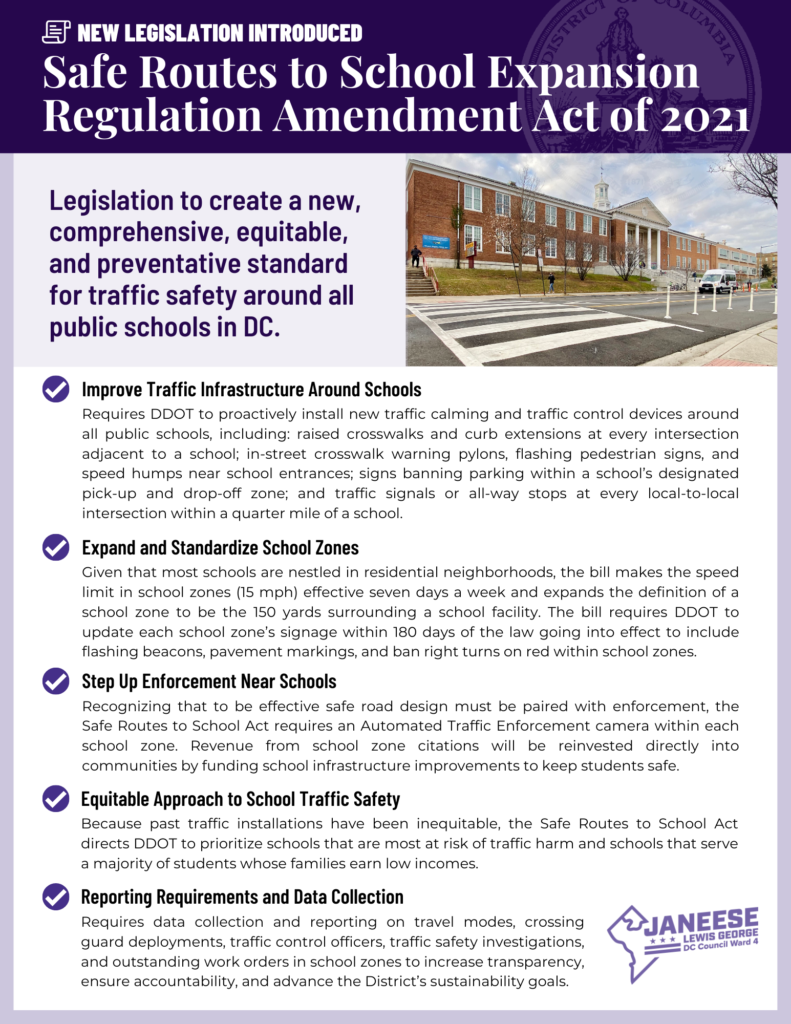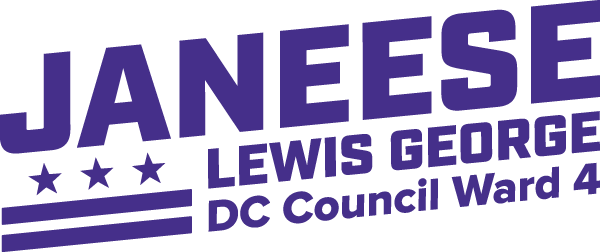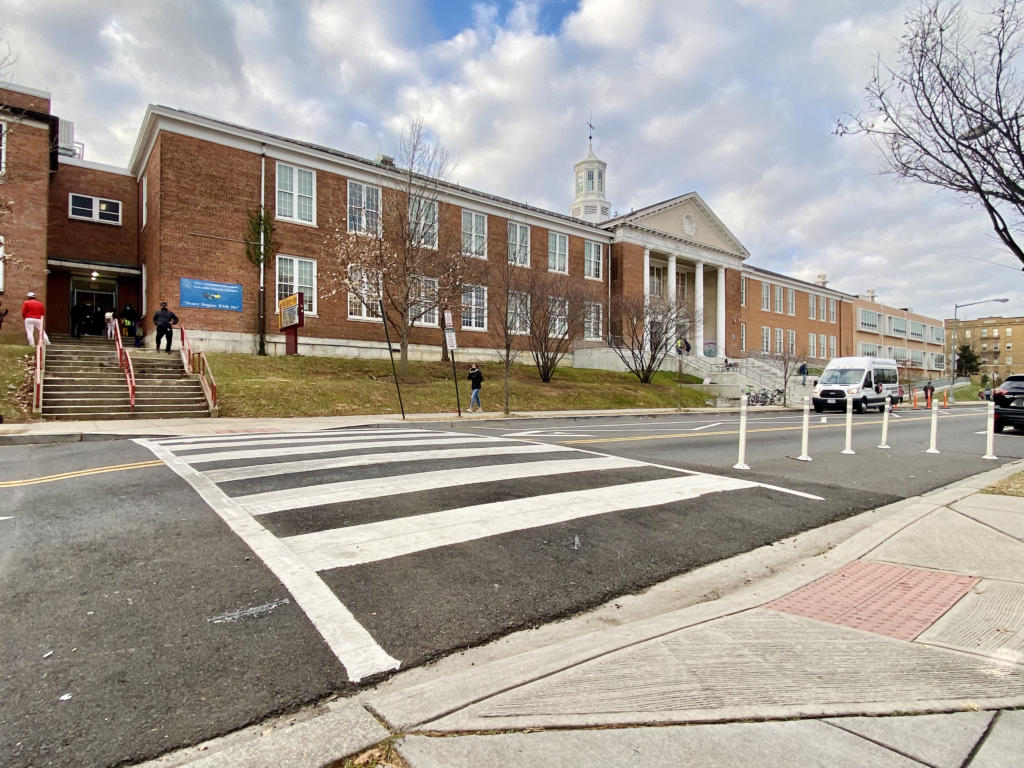Councilmember Janeese Lewis George, joined by all twelve of her fellow Councilmembers, introduced sweeping legislation to improve traffic safety at every District school by installing extensive traffic safety infrastructure, expanding school zones, stepping up enforcement, and injecting accountability and equity in DC government’s plans to improve road safety near schools.
“It’s been a year of heartbreaking loss on our streets, and those lost include our most vulnerable road users: children. Policy is a love language, and we show our children that we love them by passing, funding, and implementing the traffic safety policies we know are needed to protect them. Our young people deserve to be safe before, during, and after school – and our families deserve streets where they can walk, run, bike, or drive safely,” said Councilmember Lewis George.
The Safe Routes to School Expansion Regulation Amendment Act of 2021 (“Safe Routes to School Act”) requires a traffic signal or all-way stop at every local intersection within a quarter mile of a school. It also mandates raised crosswalks and curb extensions at every intersection adjacent to a school – as well as crosswalk warning pylons, flashing pedestrian signs, and speed humps near school entrances. The bill also improves student safety by banning parking within a school’s designated pick-up or drop-off zone.
Additionally, the Safe Routes to School Act expands school zones to cover 150 yards around a school facility and activates the reduced speed limit in school zones to seven days a week. Within 180 days of the bill going into effect, DDOT will be required to include flashing beacons, add school zone pavement markings, and ban right turns on red within school zones.
Recognizing that to be effective safe road design must be paired with enforcement, the Safe Routes to School Act requires an Automated Traffic Enforcement camera within each school zone. Revenue from school zone citations will be reinvested directly into communities by funding school infrastructure improvements to keep students and their families safe.
More than 100,000 children and 7,000 teachers commute across D.C. each day to get to school. More DC residents were killed in traffic collisions during 2021 than during any year since 2008. Those lost to traffic violence this year include 4-year-old Zyaire Joshua in Ward 4 and 5-year old Allison Hart in Ward 5, both of whom were killed less than a quarter mile from a District school. Last Friday, 9-year old Kaidyn Green in Ward 8 and 9-year-old Pete Dzeikan in Ward 7 were both struck by drivers within an hour of each other while leaving school.
Many communities have waited for decades for necessary traffic safety upgrades around their local schools. The Safe Routes to School Act requires that DDOT upgrade traffic safety infrastructure at every school zone and quarter-mile perimeter within two years of the law going into effect. Because past traffic installations have been inequitable, the legislation directs DDOT to prioritize schools that are most at risk of traffic harm and schools that serve a majority of students whose families earn low incomes.
“Sporadic enforcement and reactive, one-off changes won’t cut it. We need a comprehensive, equitable school traffic safety plan that doesn’t cut corners when it comes to protecting our children,” added Councilmember Lewis George.
To increase transparency, ensure accountability, and advance the District’s sustainability goals, the Safe Routes to School Act also requires data collection and reporting on student and staff travel modes, crossing guard deployments, traffic control officers, traffic safety investigations, and outstanding work orders in school zones.
The bill is co-introduced by Chairman Phil Mendelson and Councilmembers Brianne Nadeau, Brooke Pinto, Mary Cheh, Kenyan McDuffie, Charles Allen, Vince Gray, Trayon White, Anita Bonds, Elissa Silverman, Robert White, and Christina Henderson.


